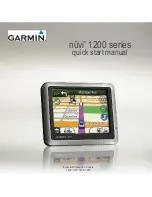
Appendix G: GPR Emissions, Interference and Regulations
100
(FCC Order DA02-1658, paragraph 9)
The regulations contain restrictions on the parties that are eligible to operate imaging systems
(See 47 C.F.R. 5.509(b), 15.511(b), and 15.513(b)). Under the new regulations, GPRs and wall
imaging systems may be used only by law enforcement, fire and emergency rescue
organizations, by scientific research institutes, by commercial mining companies, and by
construction companies. Since the adoption of the
Order
, we have received several inquiries
from the operators of GPRs and wall imaging systems noting that these devices often are not
operated by the users listed in the regulations but are operated under contract by personnel
specifically trained in the operation of these devices. We do not believe that the recent adoption
of the UWB rules should disrupt the critical safety services that can be performed effectively
only through the use of GPRs and wall imaging systems. We viewed these operating
restrictions in the broadest of terms. For example, we believe that the limitation on the use of
GPRs and wall imaging systems by construction companies encompasses the inspection of
buildings, roadways, bridges and runways even if the inspection finds no damage to the
structure and construction does not actually result from the inspection; the intended purpose of
the operation of the UWB device is to determine if construction is required. We also believe that
the GPRs and wall imaging systems may be operated for one of the purposes described in the
regulations but need not be operated directly by one of the described parties. For example, a
GPR may be operated by a private company investigating forensic evidence for a local police
department.
FCC Permitted Mode of Usage
The GPR antenna must be kept on the surface to be in compliance with FCC regulations. Use
of the antenna is not permitted if it is lifted off the surface. Use as a through-the-wall imaging
device is prohibited.
GPR Use Coordination
FCC regulation 15.525(c) (updated in February 2007) requires users of GPR equipment to
coordinate the use of their GPR equipment as described below:
TITLE 47--TELECOMMUNICATION
CHAPTER I--FEDERAL COMMUNICATIONS COMMISSION
PART 15_RADIO FREQUENCY DEVICES
Subpart F_Ultra-Wideband Operation Sec.
15.525 Coordination requirements.
(a) UWB imaging systems require coordination through the FCC before the equipment may
be used. The operator shall comply with any constraints on equipment usage resulting from this
coordination.
(b) The users of UWB imaging devices shall supply operational areas to the FCC Office of
Engineering and Technology, which shall coordinate this information with the Federal
Government through the National Telecommunications and Information Administration. The
information provided by the UWB operator shall include the name, address and other pertinent
contact information of the user, the desired geographical area(s) of operation, and the FCC ID
number and other nomenclature of the UWB device. If the imaging device is intended to be
used for mobile applications, the geographical area(s) of operation may be the state(s) or
county(ies) in which the equipment will be operated. The operator of an imaging system used
for fixed operation shall supply a specific geographical location or the address at which the
equipment will be operated. This material shall be submitted to:
Frequency Coordination Branch, OET
Federal Communications Commission
445 12
th
Street, SW, Washington, D.C.
20554
Summary of Contents for SPIDAR NIC-500s
Page 1: ......
Page 2: ...ii...
Page 4: ...Warranty Confirmation iv...
Page 6: ...vi...
Page 10: ...Introduction 2...
Page 28: ...Getting Started 20...
Page 66: ...SPIDAR Software 58...
Page 78: ...SPIDAR SDK 70...
Page 88: ...Compatibility 80...
Page 90: ...Technical Specifications 82...
Page 102: ...Appendix D GPR Knowledge 94...
Page 106: ...Appendix F Health Safety Certification 98...
Page 114: ...Appendix G GPR Emissions Interference and Regulations 106...
Page 116: ...Appendix H Instrument Interference 108...
Page 118: ...Appendix I Safety around Explosive Devices 110...












































